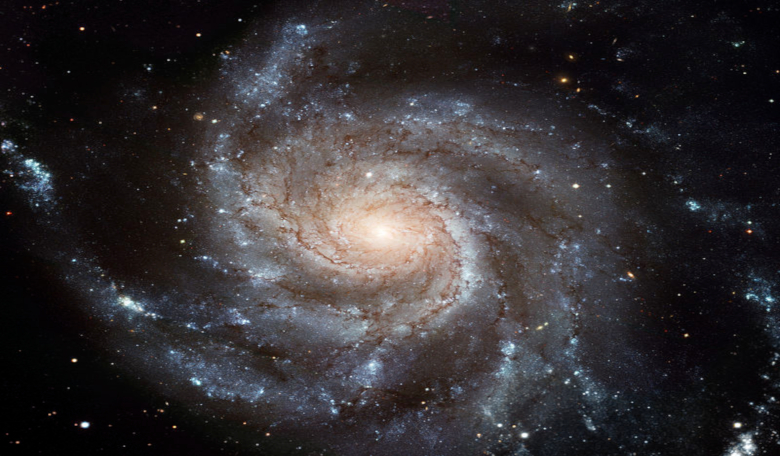It seems the Universe is in a spin and has been since the beginning – a finding that goes against the current theory of how our cosmos formed.
Earth is spinning, so are our neighbouring planets, in fact if you look around space, you'll see that a lot of things including the Milky Way are spinning too. So does that mean the Universe does as well?
Since the time of Edwin Hubble, astronomers have believed that the Universe is inflating with no particular direction and that the galaxies in it are distributed with no particular cosmological structure. This assumption is consistent with Einstein’s equations but isn't required by them.
However when cosmologists study the Universe’s fundamental nature, they do so by assuming that the Universe is not rotating and is isotropic.
This assumption has been tested by observations of the cosmic microwave background, or CMB for short. Studies of this relic radiation leftover from the Big Bang showed that it looks nearly identical in every direction. Nearly, but not 100 percent as there are tiny variations in its temperature by just a thousandth of a degree.
By studying these differences, scientists concluded that the CMB shows no evidence that the Universe is rotating. But now, a new study on the analysis of more than 200,000 spiral galaxies, contradicts this previously held assumption.
Spiral galaxies are a unique astronomical objects because their visual appearance depends on the observer's perspective.
For example, a spiral galaxy that spins clockwise when observed from Earth, would seem to spin counterclockwise when the observer is located in the opposite side of that galaxy.
It stands to reason then that if the Universe is isotropic and has no particular structure – as previous research suggested – the number of galaxies that spin clockwise would be roughly equal to the number of galaxies that spin counterclockwise.
Not so apparently. After collecting data from telescopes dedicated to generating vast data sets on the structure of the Universe such as the Sloan Digital Sky Survey (SDSS) and the Panoramic Survey Telescope and Rapid Response System (Pan-STARRS), Lior Shamir, a computational astronomer and computer scientist at Kansas State University, used a computer programme to sort the galaxies by their spin direction; a process that would take considerably longer if completed by a person or group of people.
"Data science in astronomy has not just made astronomy research more cost-effective, but it also allows us to observe the Universe in a completely different way," Shamir said.
His results showed that when comparing the number of galaxies with different spin directions, the number of galaxies that spin clockwise is not equal to the number of galaxies that spin counterclockwise. The difference is small, just over 2 percent, but with the high number of galaxies, there is a probability of less than 1 to 4 billion to have such asymmetry by chance, according to Shamir's research.
In other words, the Universe could have a defined structure and that the early Universe could have been spinning.
"The geometrical pattern exhibited by the distribution of the spiral galaxies is clear, but can only be observed when analysing a very large number of astronomical objects,” Shamir added.
The patterns span over more than 4 billion light-years, but the asymmetry in that range is not uniform. The asymmetry gets higher when the galaxies are more distant from Earth, which shows that the early Universe was more consistent and less chaotic than the current Universe.
Whats more, the patterns do not just show that the Universe is not symmetric, but also that the asymmetry changes in different parts of the Universe, and the differences exhibit a unique pattern of multipoles.
"If the Universe has an axis, it is not a simple single axis like a merry-go-round," Shamir said. "It is a complex alignment of multiple axes that also have a certain drift."
Upending previous assumptions about the large-scale structure of the Universe is a big deal, but Shamir seems confident that no error or contamination of the data is apparent because of the "unique, complex and consistent patterns," of the galaxies. "We have two different sky surveys showing the exact same patterns, even when the galaxies are completely different. There is no error that can lead to that,” he says.
These findings were presented at the 236th American Astronomical Society meeting held this week.
If you've enjoyed reading this article, please consider subscribing to ROOM Space Journal to gain immediate and full access to the latest magazine feature articles and receive your own print and/or digital copies of the quarterly ROOM magazine delivered electronically or direct to your door.











